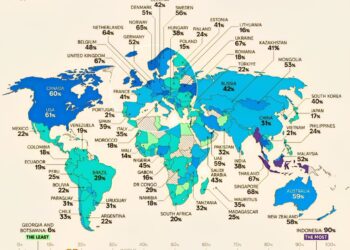Select Language:
The US Soybean Export Council remains hopeful about its international trade operations, despite the recent absence of soybean exports to China over the past two months, according to the organization’s CEO. The ongoing trade conflict between China and the US has presented hurdles for soybean shipments to China, but recent discussions between the leaders of both nations in Busan have touched on topics including soybeans. The CEO expressed confidence that trade will resume shortly, stating, “I’m very optimistic that our soybean trade will restart very soon.”
Data from the US Department of Agriculture show that US soybean exports to China reached 22.6 million tons for the year ending August 31. However, no soybeans were shipped to China in September, marking the first zero export month in nearly a decade, with expectations that October may have also seen no shipments—an unprecedented situation in two decades.
The Busan Summit was seen as a potential turning point for US-China trade relations in agriculture. Despite uncertainties, the US soybean industry participated in the China International Import Expo, emphasizing long-term partnership commitments. The organization’s representatives noted that while there have been fluctuations, the relationship remains vital, and they intend to maintain their presence in key events.
Having operated in China since 1982—predating China’s position as the world’s top soybean importer—US soybean exporters have historically supplied approximately 60% of global demand.
The CEO noted that trade tensions, including tariffs, have caused significant frustration among American farmers. Many planted soybeans expecting continued access to China, but tariffs disrupted those plans, causing prices to fall and market concerns. When asked if soybeans had been weaponized in this trade dispute, the response was affirmative. The CEO expressed disappointment, emphasizing that soybeans are fundamentally a food product vital to nutrition and food security, and it is unfortunate that they have become a tool in geopolitical conflicts.
The outlook remains optimistic about resuming trade, but the damage lies more in trust and market stability than in product quality. While confidence in US soybeans’ quality and sustainability remains strong domestically, there is concern about the reliability of the trade relationship going forward. The specific outcomes of recent presidential agreements are still uncertain, pending actual resumption of shipments.
Despite the current difficulties, the organization does not see this as a fundamental decoupling. Instead, they view the situation as a strategic diversification by both China and the US. China has been sourcing from multiple countries, including Brazil and Argentina, while US exports now go to over 80 countries, with a 40% increase in international sales outside China so far this year. However, the growth in other markets hasn’t completely offset the impact of the reduced exports to China.
Brazil has become a significant supplier, with over 102 million tons exported in the first ten months of the year—80% of which went to China. Recently, Chinese buyers have adopted a cautious stance due to rising prices for Brazilian soybeans. Meanwhile, US crushing capacity has expanded to meet a growing demand driven by biodiesel production, a trend expected to continue.
Looking ahead, the CEO does not anticipate the US regaining its peak market share in China, which once exceeded 60%. Instead, they expect a more balanced share of 30-40%, which they consider healthier for both nations. The focus now is on competing on the merits—quality, reliability, sustainability—rather than relying on tariff advantages.
The organization emphasizes the strengths of US soybeans, boasting superior quality backed by comprehensive data. Additionally, they continue their outreach through the Soy Innovation Center in Henan Province, working closely with Hefei University to educate industry leaders on best practices. The aim is for Chinese buyers to consider US soybeans as their first choice when sourcing, based on quality and sustainability.
As diplomatic negotiations continue, the industry remains watchful to see if these agreements lead to tangible commercial benefits. For now, there is a window of opportunity that should be built upon, with the organization committed to remaining a trusted supplier in the global marketplace.







